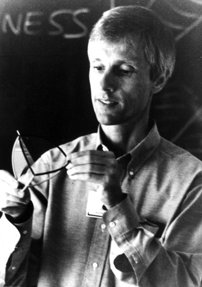- About MAA
- Membership
- MAA Publications
- Periodicals
- Blogs
- MAA Book Series
- MAA Press (an imprint of the AMS)
- MAA Notes
- MAA Reviews
- Mathematical Communication
- Information for Libraries
- Author Resources
- Advertise with MAA
- Meetings
- Competitions
- Programs
- Communities
- MAA Sections
- SIGMAA
- MAA Connect
- Students
- MAA Awards
- Awards Booklets
- Writing Awards
- Teaching Awards
- Service Awards
- Research Awards
- Lecture Awards
- Putnam Competition Individual and Team Winners
- D. E. Shaw Group AMC 8 Awards & Certificates
- Maryam Mirzakhani AMC 10 A Awards & Certificates
- Two Sigma AMC 10 B Awards & Certificates
- Jane Street AMC 12 A Awards & Certificates
- Akamai AMC 12 B Awards & Certificates
- High School Teachers
- News
You are here
Frank Morgan's Math Chat - $1000 MATH CHAT BOOK QUEST
 |
 |
The Math Chat Book, based on this column, has appeared, with questions and answers and a list of past challenge winners. It includes a $1000 Quest, that requires no special mathematics background. For more information, click on the book's image in the upper right corner of this page or call (800) 331-1622.
MATH CHAT TV, the live, call-in show with questions and prizes, will air on the web Wednesday, January 26, 7-7:30 pm Eastern time, at raserver.williams.edu/live/MathChat.rm (sorry about the technical difficulties on January 12).
QUESTIONABLE MATHEMATICS. Walter Wright reports that in June 1997 the New York Times ran the following headline:
about a building sold for four times its cost. Of course the profit is actually 300%.
Readers are invited to send in more examples of questionable mathematics from the media.
OLD CHALLENGE (Chris Lang). I imagine myself sitting on a beach in Oregon, watching the Sun set over the Pacific. At a certain moment, the very last bit of the Sun disappears below the horizon. The question is: Can I make that last bit of Sun reappear by jumping up quickly to my full height?
ANSWER (Joseph DeVincentis). "Yes - barely.
"Suppose that while sitting, your eyes are 3 feet above sea level. Consider the right triangle formed by the center of the earth, your eyes, and the horizon point. One leg of this triangle is the radius of the earth, approximately 4000 miles or 20 million feet. The hypotenuse is 20 million and 3 feet. The other leg is then the square root of 200000032 - 200000002, about 11000 feet, or a little over 2 miles.
"Now, suppose your eyes are 6 feet above sea level while standing. Repeating the calculations above, we find that the distance to the horizon is about 15500 feet.
"How much time along the sun's path does 4500 feet around the earth represent? The entire path is [less than] 25000 miles or 125 million feet [Earth's circumference] in 24 hours, so 4500 feet represents [at least] 3 seconds. Thus, by standing, you effectively make the sun set [at least] 3 seconds later; if you stand up quickly, you should be able to catch a glimpse."
Eric Brahinsky notes that at the latitude of Oregon, about 45 degrees, the entire distance around the Earth is less than 25000 by a factor of the cosine of 45 degrees or about .7, giving you at least 3/.7 or more than 4 seconds. Moreover, depending on the season, the day-night line will be moving at some angle to due west and you'll have even more time.
Ken Frank points out that this exercise could be used to compute the radius of the earth.
Math Chat notes an easy estimate for the number of miles to the sea's horizon in terms of height h in feet: ![]() 1.5 h. For example, if h is 6 feet, the distance to the horizon is
1.5 h. For example, if h is 6 feet, the distance to the horizon is ![]() 9 = 3 miles, in agreement with DeVincentis's 15500 feet above.
9 = 3 miles, in agreement with DeVincentis's 15500 feet above.
(Winning answers also by José Cañizo Rincón and John Snygg.)
NEW CHALLENGE. Just last summer (see June 17 Math Chat) Thomas Hales of the University of Michigan proved that regular hexagons provide the least-perimeter (least-length) way to divide the plane into equal areas. What is the shortest network of curves you can find dividing the surface of the sphere into say four equal areas? five equal areas? other numbers of equal areas?
Send answers, comments, and new questions by email to Frank.Morgan@williams.edu, to be eligible for Flatland and other book awards. Winning answers will appear in the next Math Chat. Math Chat appears on the first and third Thursdays of each month. Prof. Morgan's homepage is at www.williams.edu/Mathematics/fmorgan.
Copyright 2000, Frank Morgan.
MATH CHAT TV, the live, call-in show with questions and prizes, will air on the web Wednesdays, January 12, 19, and 26, 7-7:30 pm Eastern time, at raserver.williams.edu/live/MathChat.rm
THE MATH CHAT BOOK, including a $1000 Math Chat Book QUEST, questions and answers, and a list of past challenge winners, is now available from the MAA (800-331-1622). See /books/mch.html




